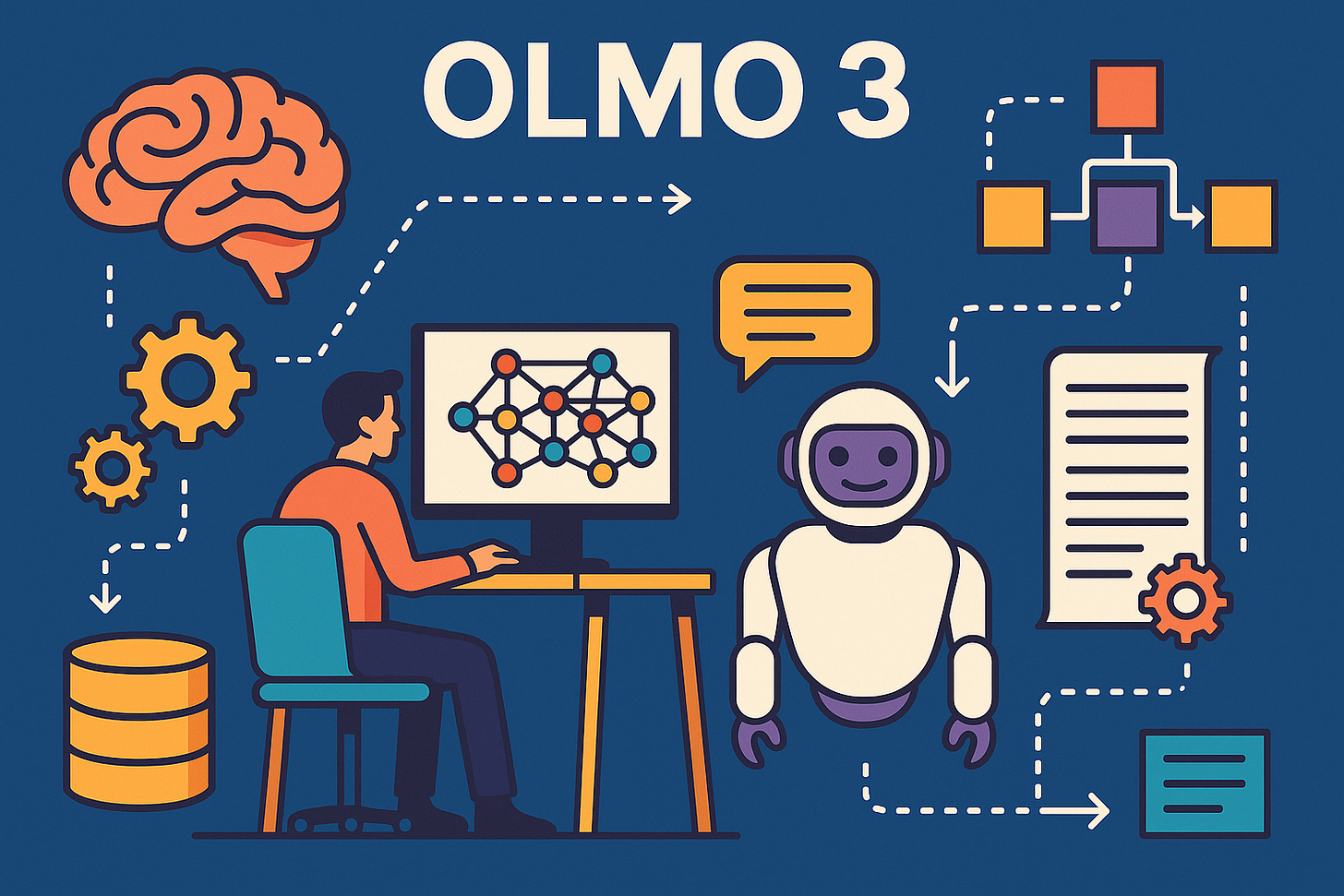The Sequence AI of the Week #761: Olmo 3 vs. The Black Box: What a Truly Inspectable LLM Looks Like
Inside one of my favorite open source AI stacks.
Happy Thanksgiving for those of you in The US. I have many things to be thankful for this year including this amazing audience. We are moving tomorrow’s issue to Friday to accomodate the holiday.
Olmo 3 is a fascinating case study in how far you can push a relatively classical transformer architecture when you take the entire lifecycle of the model seriously. Rather than trying to win with a radically new network design, the Allen Institute for AI treats architecture, data, training curriculum, and openness as a single coherent object. The result is a family of models that are competitive with the strongest open-weight systems, but whose inner workings—from scraped tokens to reasoning traces—are unusually transparent.
At a high level, Olmo 3 comes in two main parameter scales, around 7 billion and 32 billion parameters. Each scale is offered in several behavioral variants that sit on top of a shared base architecture. The Base model is the foundational system trained on a multi-stage curriculum; it is meant to be a strong backbone for further pretraining or fine-tuning. On top of that, the team builds specialized variants such as Think, which emphasizes explicit reasoning traces; Instruct, which targets instruction following and tool use; and RL-Zero, which is designed as a clean platform for reinforcement learning experiments. What is distinctive is not just that these variants exist, but that their entire training flow is documented and reproducible, so that researchers can see how each stage alters the underlying capabilities.

